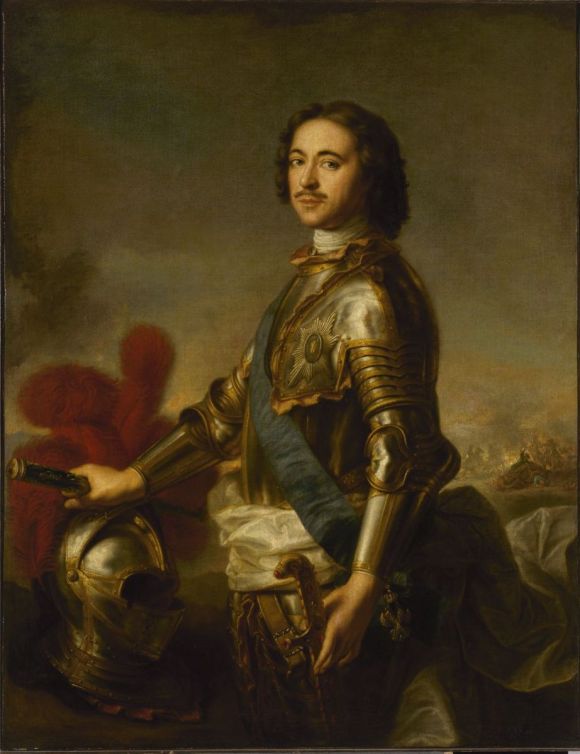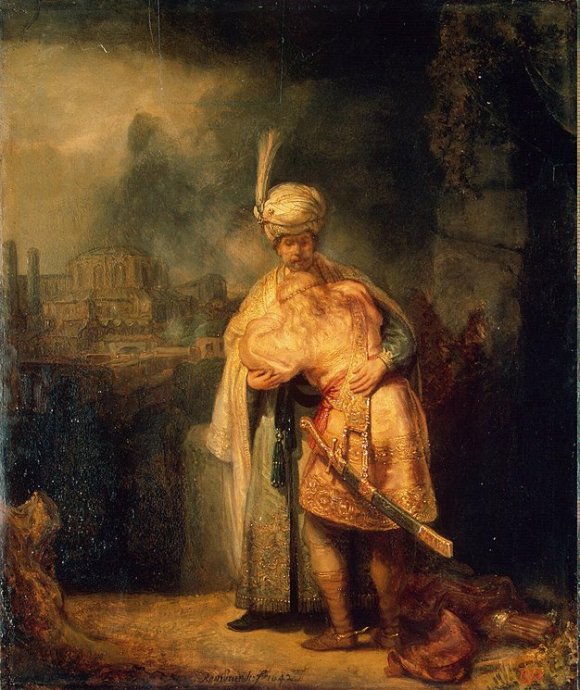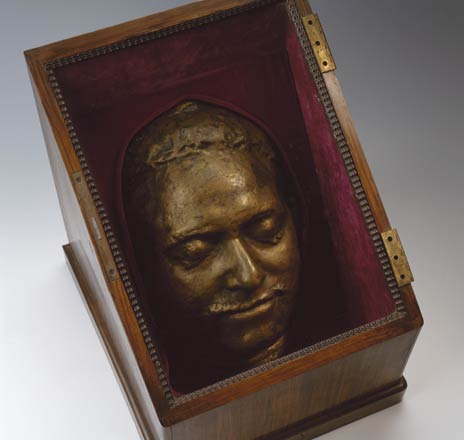
2013 is Netherlands-Russia Year, a year of bilateral events depicting and emphasising, celebrating, and perhaps even serving to enhance the relationship shared by the two countries. Whilst the official opening of this bilateral year is yet to take place – it will be marked on April 8 in the Netherlands, and a month later in Russia – an extensive events programme is already well underway.
The Drents Museum in Assen has, since last November, been host to an exhibition, The Soviet Myth, featuring themes and artists from Russian art as it existed under Stalin, the exhibited pieces drawn from the collection of the State Russian Museum in Saint Petersburg. In Zaandam – a town just north-west of Amsterdam; where Claude Monet would stay four months and paint twenty-four canvases one-and-three-quarter centuries later – work is continuing on the restoration of the house in which Peter the Great stayed (alas, for just over one week) upon his visit to the Netherlands in 1697. In Eindhoven, at The Van Abbe Museum, an exhibition contrasts the art of El Lissitzky with the works of some modern practitioners; the exhibition borrows pieces from the Guggenheim in New York and the Centre Pompidou in Paris, and will subsequently travel to the Hermitage in Saint Petersburg and the Multimedia Art Museum in Moscow.
A project based in The Hague, entitled ‘Now Wakes the Sea’, involving Dutch and Russian groups and institutes, will investigate the effects of changes – scenic, cultural and economic – to coastal areas. A wealth of performances and activities are scheduled for Groningen, including a Russian film month hosted by Forum Images cinema; the first performance of a touring Noord Nederlands Toneel adaptation of Dostoevsky’s Crime and Punishment; a collobarative exhibition between the Dutch art collective Artcetera and artists from the Saint Petersburg studio Nepokorennye; and an educational course on socialist realism in the arts. An exhibition at Maastricht’s Bonnefantenmuseum, The Great Change – Revolutions in Russian Painting, 1895-1917, will display works by Malevich, Kandinsky, Goncharova, and Tatlin. In Apeldoorn, a range of activities will take place in Palace Het Loo: Peter the Great was encouraged in his shipbuilding and city-building exploits by William of Orange, whom he met on a visit to London, and for whom the Palace was built; and Peter visited the Palace whilst in the Netherlands, staying at the nearby building which is now the Bilderberg Hotel de Keizerskroon.
Events, seminars and exhibitions of the same sort will extend throughout the Netherlands – a broad programme will commence over the coming months in Rotterdam; and also take in Zwolle, Breda, Nijmegen, Enschede, Arnhem and so on – and then increasingly move towards Russia as the year progresses.
Amsterdam, as the capital of the Netherlands and the city where Peter the Great studied shipbuilding for four months in late 1697, occupies a central place amidst all these festivities. Among numerous other events, Foam photography museum is holding an exhibition, Primrose – Russian Colour Photography, which displays Russian photography from around 1850 to the present day, focusing on colouration processes including the luminous glass plate works of Sergey Prokudin-Gorski; and the Muziektheater and De Nederlandse Opera are currently staging Prokofiev’s opera, L’amour des trois oranges.
The Hermitage Amsterdam, as the only dependency of the State Hermitage Museum outside Russia, is singularly well established to celebrate and delineate the cultural connections between the Netherlands and Russia. Whilst recent exhibitions brought together a world-class collection of nineteenth century French, Impressionist and Post-Impressionist painting, and continue to see the museum serve as home to Vincent van Gogh while the Van Gogh Museum undergoes refurbishment, beyond the museum’s two exhibition wings there are permanent displays considering the development of the Hermitage Amsterdam and viewing more widely the relationship between Amsterdam and Russia.
As part of Netherlands-Russia Year, an exhibition entitled Peter the Great, an Inspired Tsar opened at the Hermitage Amsterdam over the weekend. The exhibition brings together a range of paintings, objects and artefacts from the duration of Peter’s life, many of the pieces loaned from the State Hermitage in Petersburg. Featured are clothes Peter wore at home and in battle; a carriage he used to ride about Peterhof; the lathes upon which he worked wood and metal and some of the intricate items which were their products; and statues and ornaments which he used to adorn his palace gardens, including nudes which were controversial as the first to appear in Orthodox Russia (a note explains that Peter had to have guards watching these nudes, protecting them from an agitated public). Alongside Peter’s possessions, there are other pieces indicative of the time: of developments in marine navigation, in building, in weaponry, in anatomy, and in garden design. Most notable, perhaps, is the collection of paintings which Peter acquired – either upon his two extended journeys across Europe, the first a ‘Grand Embassy’ which traveled from 1697-1698, its tour cut short by a rebellion of the Streltsy back home, the second from 1716-1717; or otherwise shipped to him in Russia – which served as the core of the Hermitage collection when founded in 1764 by Catherine the Great.
The standout is Rembrandt’s David and Jonathan (1642), a brilliant work and the only Rembrandt obtained by Peter. In fact, a number of the paintings Peter acquired believing them to be the work of Old Masters turned out not to be so: he thought he had other Rembrandts and works by Italian Rennaisance artists including Raphael, but these works are now attributed to other artists, to students, followers and related schools, or else considered forgeries. David and Jonathan, like a number of the other artworks on display, was hung by Peter in Monplaisir (‘my pleasure’) Palace, the summer residence which Peterhof was gradually built around.
So there is certainly a lot on show at Peter the Great, an Inspired Tsar; and the highlights are significant and the exhibition is well worth visiting. The pieces are nicely displayed, in long glass cases, and with paintings hung on wood panelling which mimics the interior of Monplaisir. There is even a loose fling towards interactivity, with a room in which visitors are able to try on the Russian garments of Peter’s period. Yet the exhibitions is not flawless: for all the objects and art, the exhibition lacks coherence; there are several stories some or all of which it could have told, and it ultimately succeeds in telling none.
The exhibition could have offered an informative, chronological account of Peter’s life; it could have detailed the particular ways in which Amsterdam influenced the conception, design and building of Saint Petersburg; there is even sufficient material for an exhibition focusing purely on the artistic interests of Peter the Great. Instead, the exhibiton serves a muddled, vaguely gesturing and always incomplete look at each of these things. Worst of all, even a strong sense of the broader relationship between Peter’s Russia and the Netherlands is muddied; even the time Peter spent in Amsterdam is made unclear: poorly conceptualised, the sections which show pieces which depict the period of time, rather than pieces which relate specifically to or were owned by Peter, appear inconsequential and tenuous and detract from the exhibition’s flow; and in an eagerness to suggest possible Dutch influences on Peter, actual influences, and the real Dutch figures who he knew and worked with, are lost.
So we see, for instance, Delft tiling which furnished the Menshikov Palace, the first to be built in Peter’s new capital; Peter himself would use similar tiling for Monplaisir’s pantry; but after a room with several landscape drawings and little background or contextual information, the discussion on Petersburg is over. Rooms on navigational equipment and plastination aren’t adequately tied in to Peter’s naval plans or his interest in curiosities. The final, and the largest room of the exhibition attempts to be more informative regarding the course of Peter’s life. It considers the Great Northern War, Peter’s troubles at home, his complex character at once inquisitive and ruthless, and concludes with his death mask, and two paintings of Peter on his death bed. Still, it offers an overview rather than a detailed chronology or a particular interpretation of Peter’s life; and coming at the end of proceedings, gives the exhibition a slightly unsatisfying, back-to-front feel.
____________
 David and Jonathan, by Rembrandt (1642)
David and Jonathan, by Rembrandt (1642)
____________
Peter the Great, an Inspired Tsar, will run at the Hermitage Amsterdam until September 13.
The Netherlands-Russia Bilateral Year website, with a full agenda.






[…] After visiting the Hermitage Amsterdam exhibition, Peter the Great, an Inspired Tsar, during its opening weekend, I wrote a piece reviewing the exhibition and also expanding on some of the happenings which are comprising Netherlands-Russia Bilateral Year, a year’s worth of events – of which Peter the Great is part – celebrating the cultural relationship the two countries share. I posted my piece at culturedallroundman.com. […]
Hey there, Cultured Arm team! I stumbled upon your article about the “Peter the Great” exhibition at the Hermitage Amsterdam, and I must say, it’s a fascinating read! The exhibition sounds like a remarkable tribute to the influential figure of Peter the Great and the connection between the Netherlands and Russia.
Your article beautifully highlights the significance of this exhibition in the context of the Netherlands-Russia Year, commemorating the historic ties between the two countries. The exploration of Peter the Great’s legacy and his influence on both nations is truly intriguing. The fact that this exhibition showcases artworks, artifacts, and historical documents that shed light on his life and impact is captivating.
I appreciate how you’ve provided insights into the exhibition’s curated sections, such as Peter the Great’s personal collection and the influence of Dutch art on Russian culture. The idea of tracing the connections and inspirations between these two nations through the lens of art and history is compelling. It’s evident that the exhibition offers a unique opportunity to gain a deeper understanding of the historical and cultural exchange between the Netherlands and Russia.
Your descriptions of some of the highlights, such as the extraordinary model of Peter the Great’s Grand Embassy ship, further enhance the allure of the exhibition. The attention to detail and the immersive experience it offers truly transport visitors to another time and place. It’s clear that the exhibition strives to create a multi-dimensional exploration of Peter the Great’s world.
Thank you for bringing this captivating exhibition to our attention, Cultured Arm! Your article has not only sparked my interest but also deepened my appreciation for the cultural connections between the Netherlands and Russia. Keep up the fantastic work in sharing intriguing insights into art and culture!
Visit: https://tourstravelfinder.com/hermitage-amsterdam/
Hey there, Cultured Arm! I just finished reading your article on “Peter the Great at the Hermitage Amsterdam and Netherlands-Russia Year,” and I must say, it’s a fascinating exploration of the exhibition and the cultural ties between the Netherlands and Russia. Your article sheds light on the significance of this exhibition and its role in commemorating the Netherlands-Russia Year, offering readers valuable insights into the historical and artistic connections between the two countries.
I appreciate how you delve into the life and legacy of Peter the Great, showcasing his transformative impact on Russia and his close relationship with the Netherlands. Your detailed analysis of the exhibition at the Hermitage Amsterdam provides readers with a glimpse into the remarkable artifacts and artworks on display, allowing them to appreciate the rich history and cultural exchange between these nations.
Your exploration of the themes and motifs within the exhibition, such as naval history, scientific discoveries, and artistic influences, offers a well-rounded understanding of the multifaceted nature of Peter the Great’s reign. Additionally, your inclusion of anecdotes and historical context adds depth to the narrative, making it a truly engaging read.
Furthermore, your thoughtful analysis of the exhibition’s relevance within the broader context of the Netherlands-Russia Year highlights the importance of cultural diplomacy and the celebration of shared heritage. It’s evident that you have a deep appreciation for the historical and artistic significance of this exhibition.
Thank you for sharing such an informative and thought-provoking article on Peter the Great at the Hermitage Amsterdam and the Netherlands-Russia Year. Your passion for art, history, and cultural exchange shines through in your writing, and I’m sure readers will gain a deeper appreciation for the connections between the Netherlands and Russia. Keep up the excellent work at Cultured Arm!
Highly Recommended to all. Who wants to visit World. For More information: https://tourstravelfinder.com/hermitage-amsterdam/